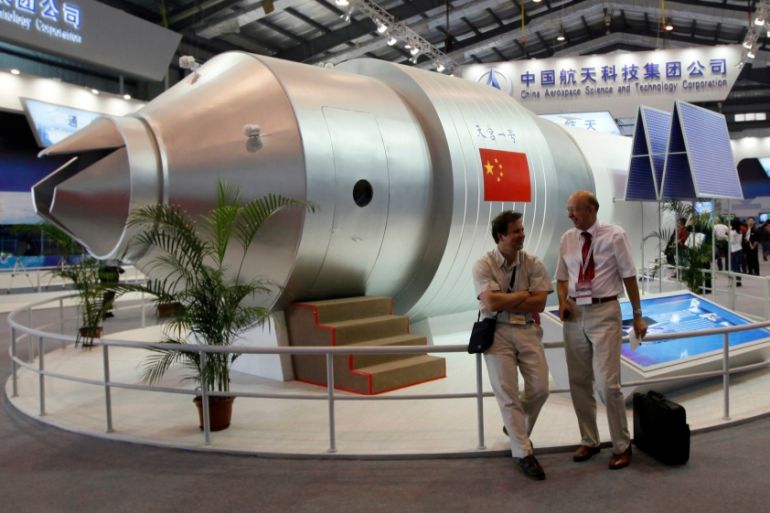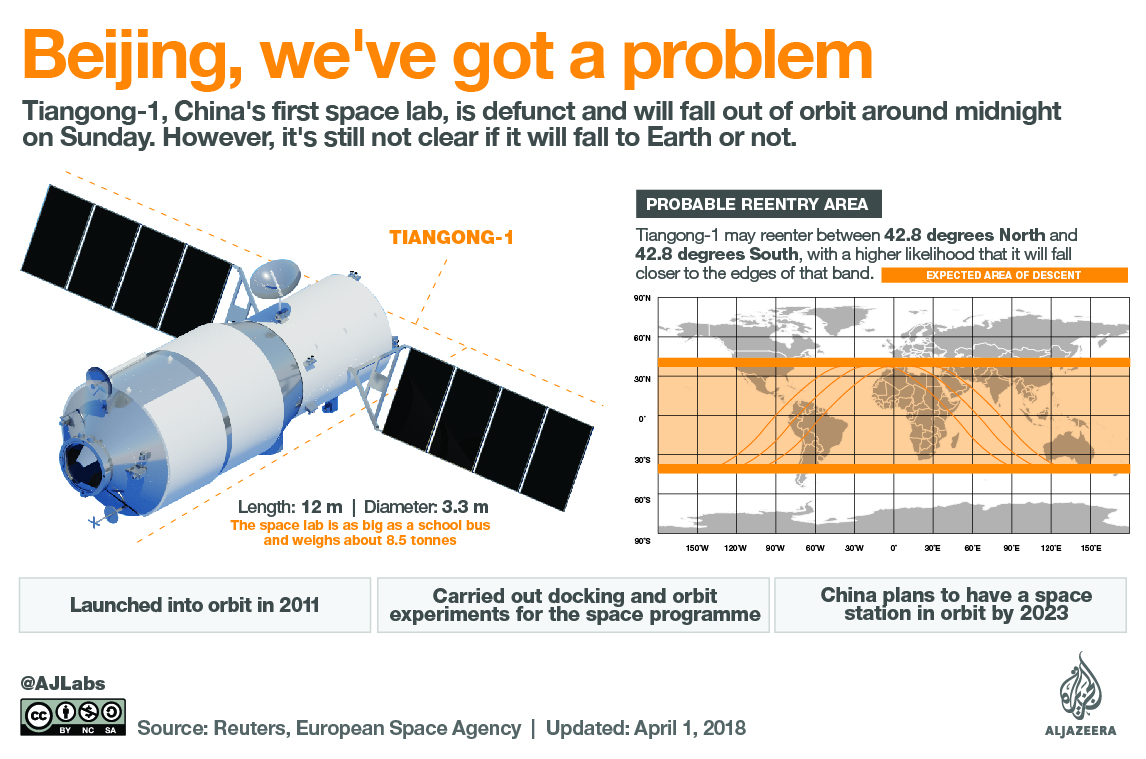China’s Tiangong-1 space station set to crash on Earth
Abandoned Chinese space station expected to hit Earth’s atmosphere within hours after contact lost in 2016.

Tiangong-1, China’s defunct space laboratory, will make an uncontrolled re-entry into Earth’s atmosphere within the 24 hours, according to Chinese officials.
China’s first space station, the Tiangong-1, will come crashing back to Earth around midnight on Sunday, Chinese authorities have said.
Keep reading
list of 4 itemsChina launches Chang’e-6 probe to study dark side of the moon
China launches historic mission to far side of the moon
Why does NASA want a time zone on the moon?
Launched in 2011, the abandoned craft has been slowly descending towards Earth’s atmosphere after China lost control of it in 2016.
According to forecasts, the station will re-enter sometime between Sunday night and early Monday GMT.
During re-entry, its speed will approach 26,000 kilometres an hour, which will most likely lead most of it to burn up. Large pieces are not expected to hit the Earth, and it will probably cause a meteor shower during its descent.
The exact area where Tiangong-1 will crash is unknown, as it is dependent on many factors.
It is expected to come to Earth somewhere between 43 degrees North and 43 degrees South, a range covering most of the United States, China, Africa, southern Europe, Australia and South America.
Out of range are Russia, Canada and northern Europe.

The unoccupied station is 12 metres long, has a diameter of 3.3 metres and weighs 8,500kg.
It was supposed to be decommissioned in 2013 after a two-year mission, but China’s space agency extended its mission several times.
During its tenure, Tiangong-1 was mostly used as a test-bed for China’s current space capabilities, especially the docking capabilities of Chinese spacecraft.
#ICYMI Every week, on average, a substantial, inert satellite drops into our atmosphere and burns up. Monitoring these reentries and warning European civil authorities has become routine work for ESA’s #spacedebris experts. #tiangong1
Read more: https://t.co/5eBJzT2E67 pic.twitter.com/V5OzYKVsEQ— ESA (@esa) April 1, 2018
China originally said re-entry would happen somewhere at the end of 2017 but that process was delayed.
Experts subsequently came to the conclusion China did no longer have control over the station, leading to the eventual uncontrolled re-entry into Earth’s atmosphere.
Space debris entering Earth’s orbit is a common occurrence, but pieces the size of Tiangong-1 re-entering are a rare occurrence.
In total, about 22,000 space objects larger than 10 centimetres are currently being tracked, according to US space agency NASA.
Most of those pieces of debris do not pose any risk to people on Earth since the vast majority burn up during re-entry.